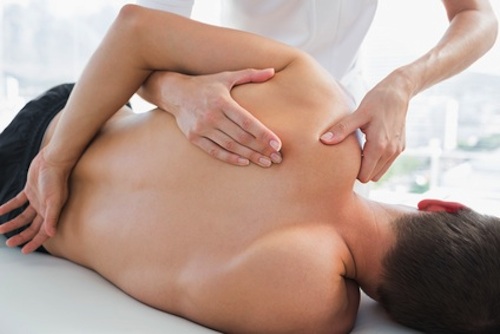Osteopathic Manual Therapy

Osteopathic Manual Therapy is a holistic science, based on a comprehensive system of diagnosis and treatment. It uses the interrelationship of anatomy and physiology, and respects the functioning of the entire human system.
Traditional Osteopathy, as presented by the Canadian College of Osteopathy, is defined as: “A natural medicine which aims to restore function in the body by treating the causes of pain and imbalance. To achieve this goal the Osteopath relies on the quality and finesse of his/her palpation and works with the position, mobility and quality of the tissues.” ~ Philippe Druelle, DO.
How Does Osteopathy Work?
Osteopathy uses very precise palpation (sometimes referred to as listening, see below) and manipulation techniques to treat the restrictions in tissue, which prevent the various parts of the body from fulfilling their natural functions. The objective of the practice of Osteopathy is to restore mobility to the different systems of the body to assure that the body is moving freely. This free motion ensures that all innate healing systems are free to work unhindered (where the body works as one harmonious system).
The therapist’s goal is to treat the cause of the dysfunction as soon as it has been detected. If left untreated, such dysfunctions will manifest themselves in the form of functional impediments, weakened defence systems, postural imbalances and pain.
Palpation, as defined by the Canadian College of Osteopathy:
Is a diagnostic skill that the Osteopath uses to feel or sense the state of the tissues or systems being examined. This sense encompasses the many sensory aspects of touch, such as the ability to detect moisture, texture, temperature differential, and subtle motion. This ability to detect almost imperceptible motion, provides the Osteopath with the capability of perceiving the inherent motion present in all living organisms. This palpatory ability is not a gift; rather it is a trained skill that takes years to develop.
Osteopaths palpate by a gently yet intentionally touching the tissues or systems under examination. With experience Osteopaths learn to palpate not just superficially but also very deeply within the body. This sensory information is received through touch receptors on the fingertips and palms, and through the proprioceptors (motion and position sensors) embedded deep in the joints of the hands, wrists, arms, and even in the shoulders.
The ability to detect minute modifications in the quality of the tissues is the assessment skill that allows the Osteopath to help prioritize a patient’s course of treatment. These tissue qualities include, congestion, dehydration, scarring, stiffness, density or loss of resilience, as well as motility that is an infinitesimal movement inherent to all living tissues. It is this sensing of the quality of the tissue, in combination with the position , mobility and vitality of the tissues, that allows the Osteopath to determine the tissues or systems that need immediate attention.
How Can Osteopathy Benefit You?
Osteopaths treat a variety of common conditions including; postural problems caused by driving, work strain, or in pregnancy; babies with colic or sleeplessness, repetitive stress/strain injury, the pain of arthritis and sports injuries and more, including:
– Asthma and Respiratory Ailments
– Carpal Tunnel Syndrome
– Foot Pain
– Frozen Shoulder
– Headaches and Migraines
– Joint and Muscle Pain
– Leg, Knee and Ankle Pain
– Rheumatism
– Sciatica and Back Pain
– Shoulder and Neck Pain
– Stress, Depression, Anxiety
– Tennis Elbow
– Whiplash Injuries
… and many others
Do I Need To Undress For My Treatment?
No, your entire treatment is done fully clothed and palpation is done through the clothing.
Is Osteopathy Covered By OHIP Or Extended Health Care Benefits Policies?
OHIP at this time provides no coverage; however, many extended health benefits packages offer partial or full coverage for Osteopathic treatments. To determine if you have coverage, please contact your Health Insurance Company or human resources department.
